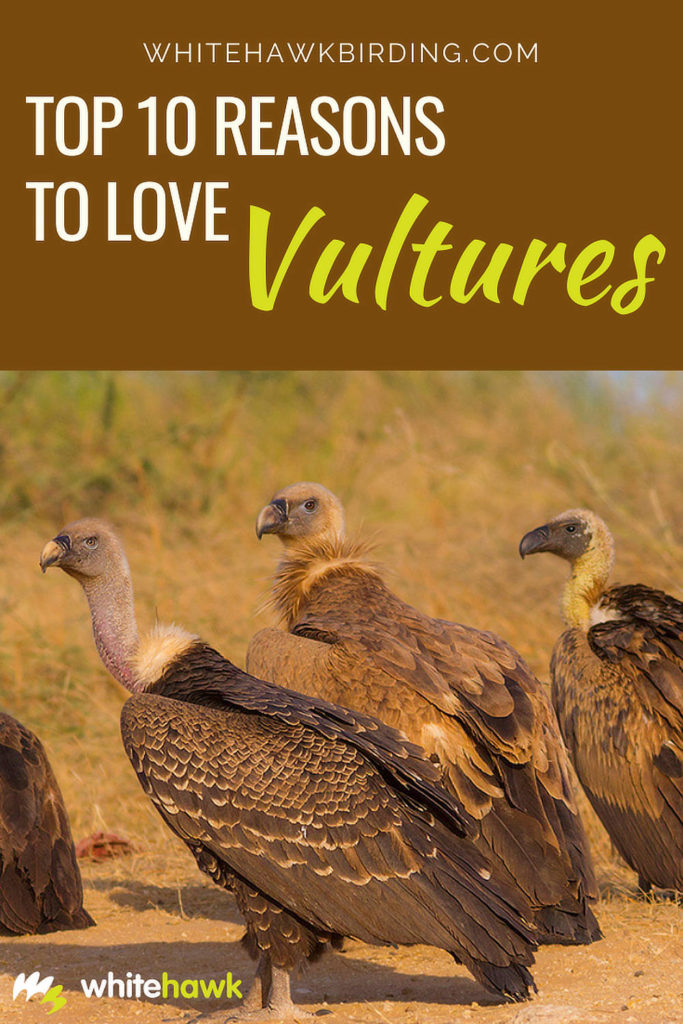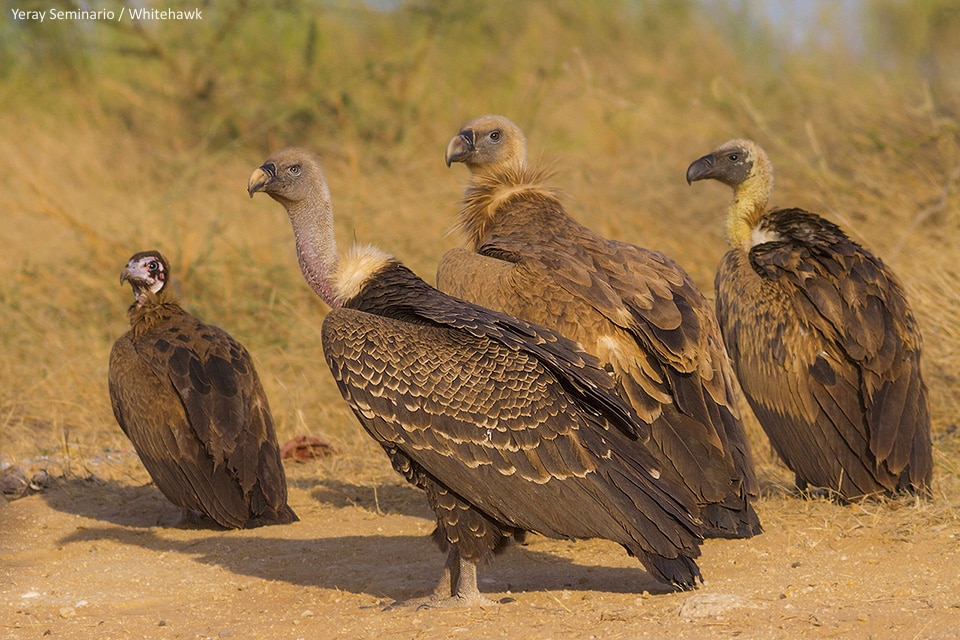
We admit it, we are big fans of vultures. And why not?! Long thought of as being dirty, ugly, garbage eaters, they are actually very beautiful birds. More importantly, play a major role in the environment. In the light of International Vulture Awareness Day 2018 which took place on September 1, we thought we would compile our list of the top 10 reasons to love vultures.
1. Bald heads
Of course, a bald bird is not the most appealing at first. Some might even consider vultures to be downright ugly. But vultures are bald for at least two good reasons. Vultures are carrion eaters and in order to get into the good parts of a carcass, they need to get their heads deep in there! If they had feathers all over their heads, it would be very difficult to clean off. Imagine plunging your head into a bowl of spaghetti and then imagine the cleanup afterwards – ugh!.
But, with a bald head, all the vulture needs to do is splash around in a puddle, wait for it to rain or just let the sun dry it off and they have a nice clean head. Love it! But that’s not the whole story. New research suggests that vultures are bald because of the weather. Being bald helps them stay cool in hot temperatures. By tucking their necks and heads in, they can stay a bit warmer in cold temperatures.
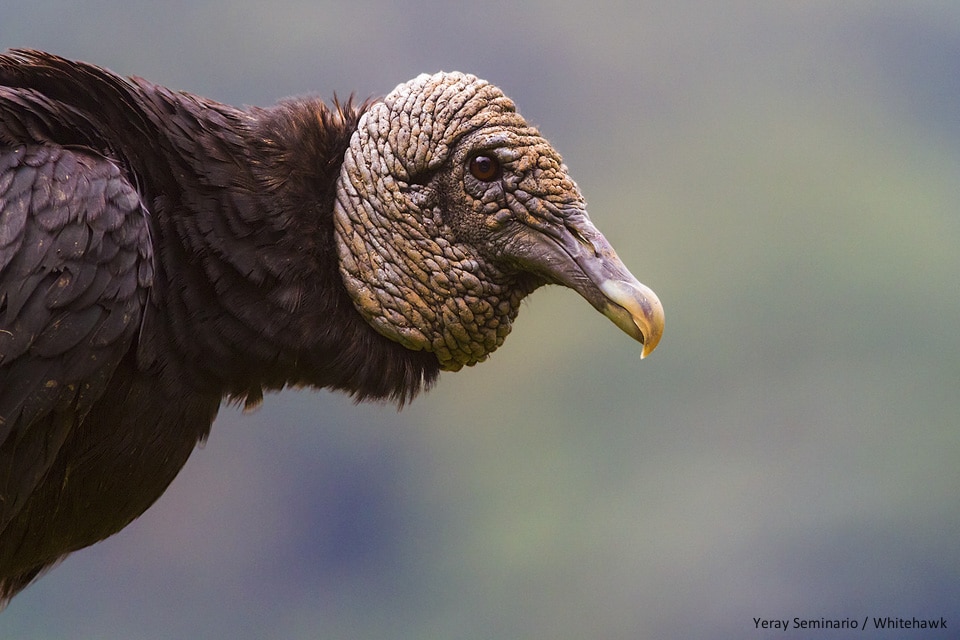
2. Nature’s clean-up crew
Vultures are scavengers and feed primarily on carrion – dead animals. They are not well-equipped to kill prey and require their food to be dead or mostly dead. They play a major role in the environment by cleaning up roadsides, fields and the forest floor of dead animals. By doing this, they help stop the spread of diseases. The stomach acids of a Turkey Vulture are so strong they can kill rabies, anthrax and other serious mammalian diseases. Nature’s most efficient clean-up crew!
3. More than just carrion-eaters
Did you know that some vultures specialize in eating some rather unique things? The Lammergeier or Bearded Vulture of Europe, Africa and Asia is one of these specialists – up to 90% of its diet consists of bone marrow. It carries bones to great heights over rocky hillsides and drops them to break them open and access the marrow inside. The Palm-Nut Vulture of Africa specializes in eating the fruit husks of oil palms and the palm-fruits of Raphia Palms. It also eats a wide variety of live animals, including crabs and mollusks, fish and turtle eggs and hatchlings. A number of vulture species are known to eat vegetable matter, and even some that will consume animal feces! See the Lammergeier in action on our India: In Search of the Snow Leopard tour.
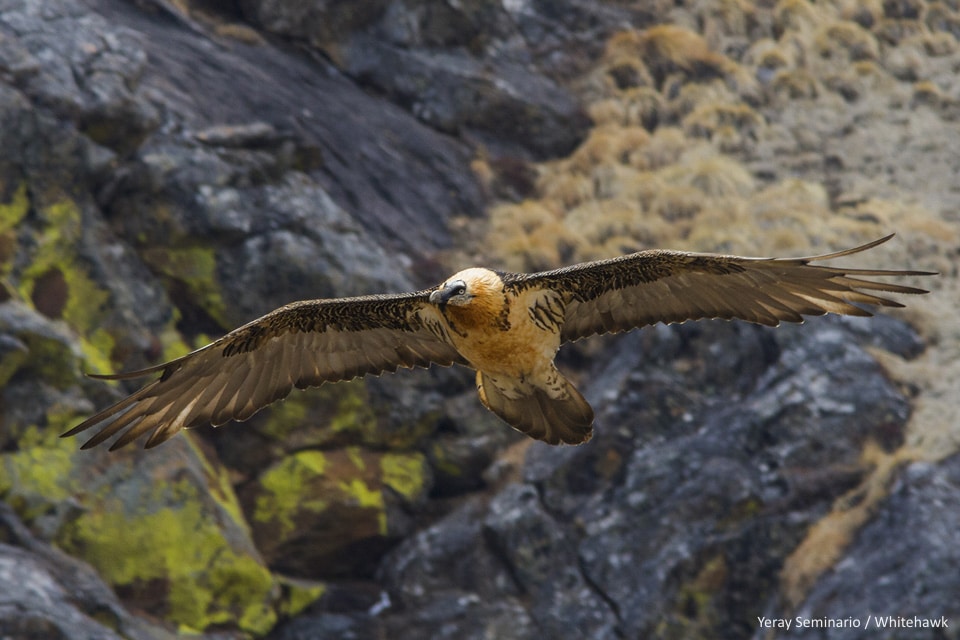
4. Sense of smell
The well-known Turkey Vulture, along with its close cousins the Greater Yellow-headed and Lesser Yellow-headed vultures of the Americas, are among only a few species of birds that has a highly-developed sense of smell. Their olfactory abilities are so good that they can find rotting meat on the forest floor covered in leaf litter from soaring above the canopy. Most vultures lack a sense of smell and, instead, use their keen eyesight to find food. Intelligent birds that they are, other species like Black and King Vultures will follow these keen-nosed vultures to where the food is. The Turkey Vulture has been used to locate leaks in natural gas lines – gas companies inject a chemical that smells like decaying flesh, and where there are leaks, Turkey Vultures will be found congregating in the area!
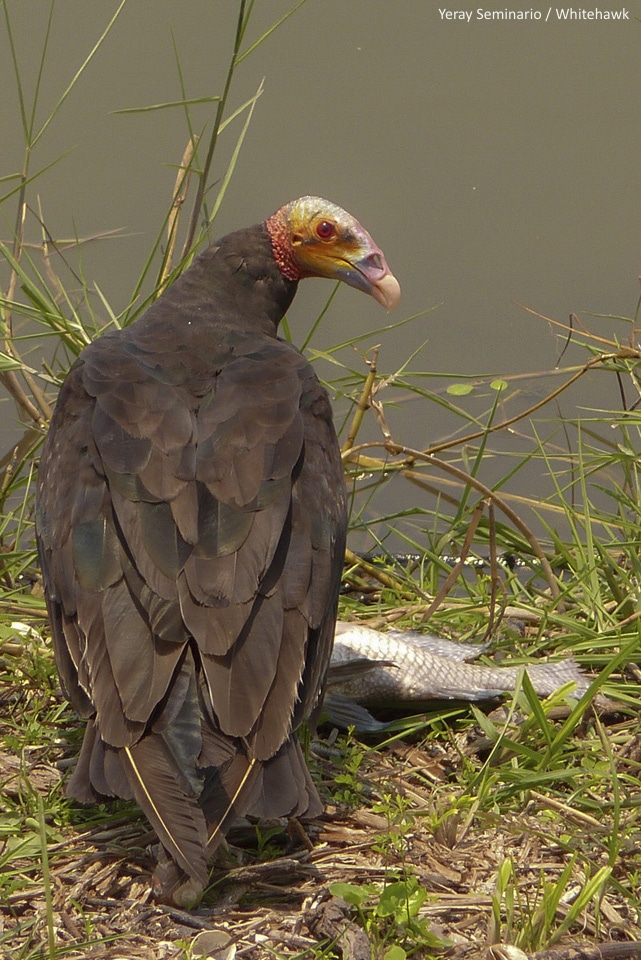
5. They’re beautiful
Despite first impressions of vultures and their unique habits, they are beautiful birds. Nobody can deny that they are incredibly graceful in flight, gliding for hours on outstretched wings. Some species, like the King Vulture and Lesser Yellow-headed Vulture of tropical America, are beautifully adorned with bright colors on their bare heads. And several species have pure-white plumage that shines in the sun when they soar overhead. Get up close with King Vultures in the Mountain Pine Ridge in Belize. How could you not love these beautiful birds?
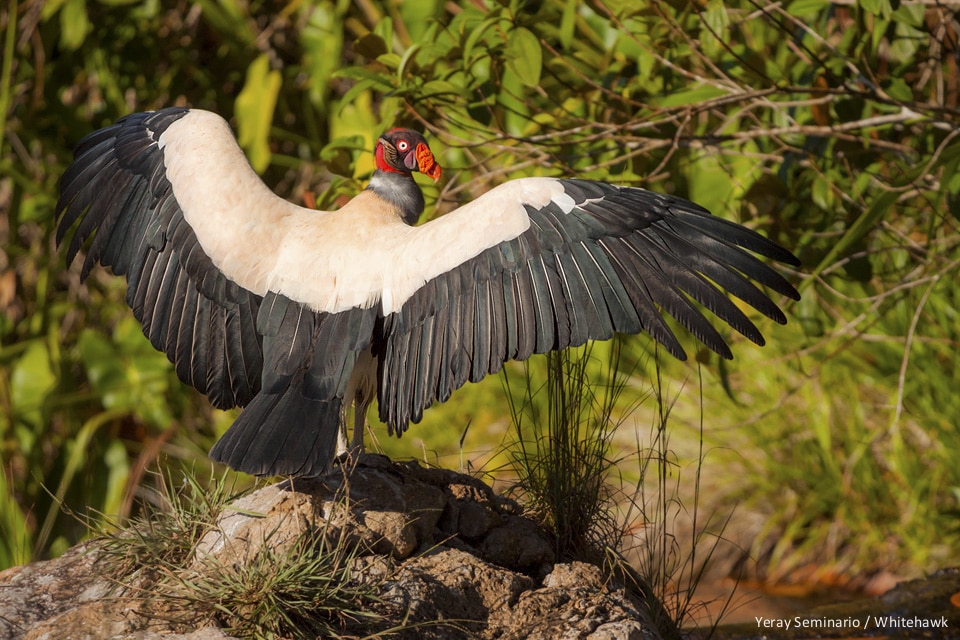
6. Long-distance travelers
Some species of vultures are migratory. They make long journeys each year from their breeding grounds to their wintering grounds where food is abundant. Turkey Vultures are well-known migrants; they fill the skies each spring and fall over North and Central America, in groups called kettles, sometimes numbering up to 10,000 individuals! Vultures migrate using thermals as a means of conserving energy; they can soar for hours this way without barely a flap of the wings. Turkey Vultures migrate from Canada well into South America, and they do so in record time, covering up to 200 miles per day! Panama is one of the best migratory hot spots for Turkey Vultures—over 1.5 million Turkey Vultures pass over the isthmus each fall. Ask us about experiencing the fantastic raptor migration of Panama.
Even non-migratory vultures can be long-distance travelers on a daily basis, soaring over 100 miles in a day in search of food. Their broad wings designed for soaring help them do this effortlessly, and they can move at speeds up to 60 miles per hour!
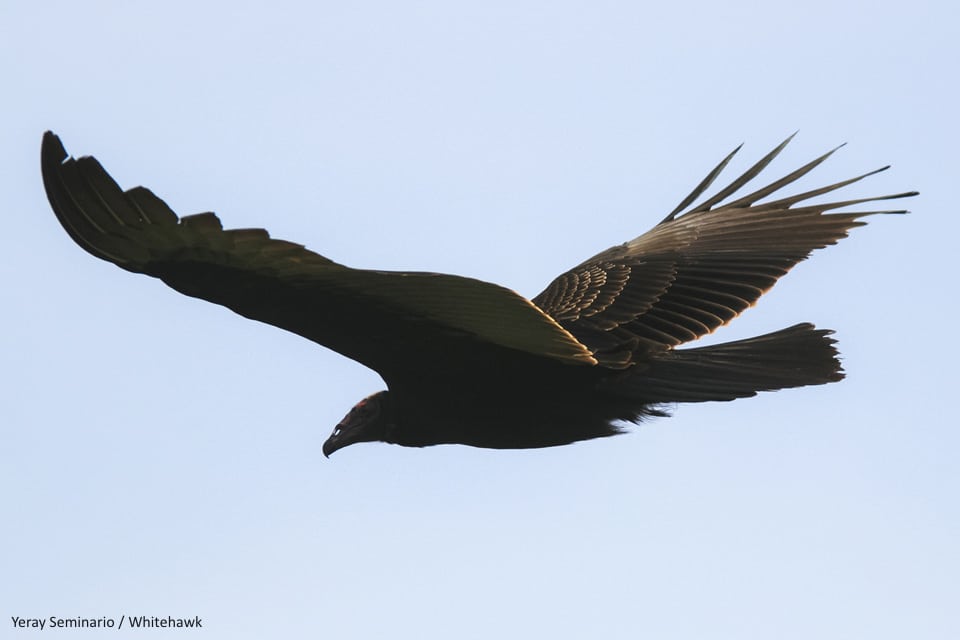
7. Find them almost everywhere
Another reason to love vultures: they are a cosmopolitan group of birds. They are found on every continent except Antarctica and Australia. Seven species can be found in the Americas from Canada down to Tierra del Fuego. There are 16 species of Old World vultures that soar the skies of Europe, Africa and Asia. Vultures are found in a wide variety of habitats, from tropical rainforest to high Andean plateaus, African savanna to the staggering rocky cliffs of the Himalayas. Wherever you may find yourself in your travels, there are likely vultures to be found. Ask us about seeing vultures on our Whitehawk tours.
8. Stars of ancient mythology
Vultures are a prominent feature in ancient mythology all over the world. They are revered as consumers of death and bringers of rebirth. They are present in Greek legends: Egyptian Vultures were known as the “cuckoo’s horse” because when they arrived in the Spring they carried migrating cuckoos on their backs. The Egyptian Vulture is also well-known in Greek tradition as the “cheese maker” because it regularly forages near dairy farms and feeds on dairy product waste. Another legend states that the poet Aeschylus died because a Lammergeier dropped a bone on his head. The stories go on and on.
Vulture heads are abundant in ancient imagery from various cultures. Vulture bodies have long been used in folk medicine. The term “griffon” is used to describe lazy, uncouth and gluttonous people, referring to the Griffon vultures. Generally, vultures are connected with shepherds and pastoral life and are typically viewed positively due to their rebirth powers.
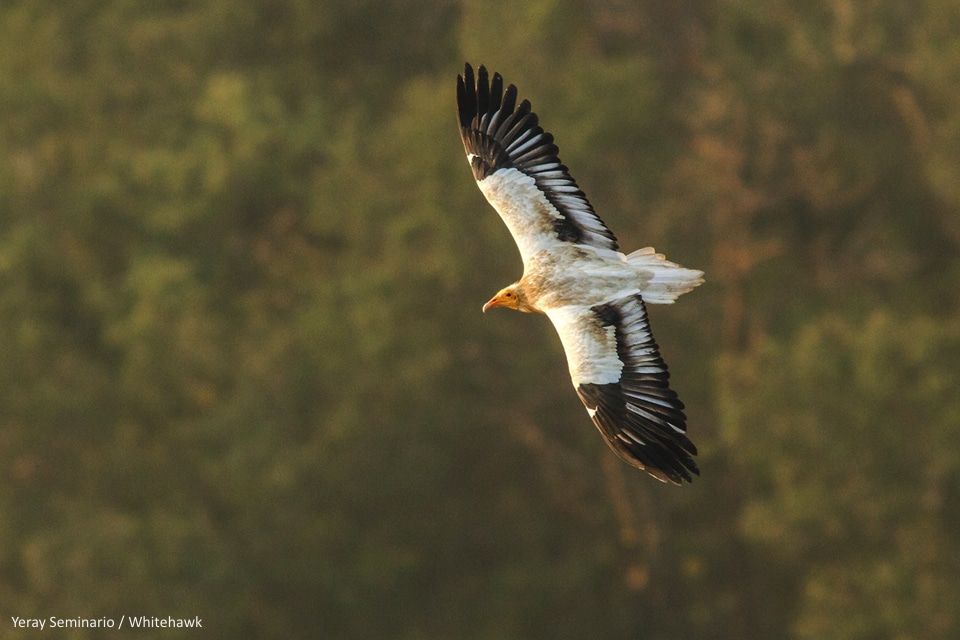
9. Record wingspans & heavyweight fliers
Vultures are among the largest flighted birds on Earth. The Andean Condor of South America is one of the heaviest flying birds. It weighs up to 33 lbs. and has an immense wingspan of over 10 feet – the largest wingspan of any raptor. This makes the Andean Condor the largest raptor on Earth. Of the Old World Vultures, the largest species is the Cinereous Vulture, just slightly smaller than its American cousin, at 31 lbs., with a similar wingspan. Lifting off the ground requires great force of their strong wings which are built for soaring and thus help conserve their energy. If you like seeing big birds, you’ll love vultures!
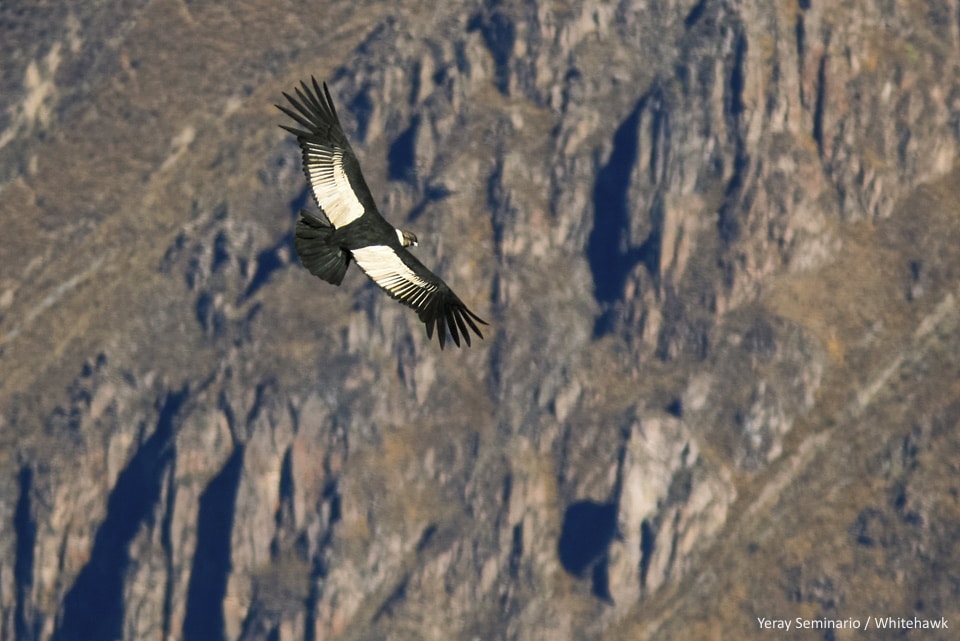
10. Bio-indicators
If you are looking for another reason to love vultures, look no further than your own back yard. Vultures are excellent environmental indicators and alert us to changes in ecosystem health. Being a scavenger near the top of the food chain, vultures are subject to bioaccumulation of toxins, such as DDT and lead. Vultures and other raptors showed early indication of environmental contamination and sparked action to ban DDT in North America. When vultures in Asia began to decline significantly in the early 2000s, it brought about attention that something was happening in the environment.
Farmers were using a veterinary drug to treat injured livestock. When the vultures ingested the meat after the animal died, the vultures suffered from kidney failure and also perished. The sad reality is that several species of vultures are now critically endangered in Asia, though this drug has been banned in some countries. Vultures are indicators of poaching activity since they travel long distances to find animal carcasses and congregate in large groups. Sadly, many vultures are targets of poisoning events by poachers trying to hide the evidence of their actions.
We love vultures!
We enjoy vultures whenever we see them – on our travels or in our own backyards. Vultures also need our help – several species are severely declining in numbers and are critically endangered. Next time you see a vulture, consider some of the reasons why they are so special and so important in our environment. Ask us about vultures on our tours. We love talking about them, and perhaps you will come to love vultures, too!

